
© Paul Kolnik. (Click image for larger version)
Alvin Ailey American Dance Theater
Busk, Ode, Ounce of Faith
★★★★✰
New York, City Center
14 December 2019
www.alvinailey.org
www.nycitycenter.org
Death and Transfiguration
Alvin Ailey American Dance Theater has a new choreographer-in-residence, Jamar Roberts, also a dancer in the company. He has just created his second piece for the troupe, Ode. Like his earlier Members Don’t Get Weary (2017), it is set to jazz. And like that work, it feels animated by an inner poetry; meaning is alluded to, not imposed. And because of that, it feels all the more profound. Ode was the centerpiece and the highlight of the company’s Dec. 14 performance, which also included Aszure Barton’s Busk (a company premiere) and Darrell Grand Moultrie’s Ounce of Faith (a premiere).
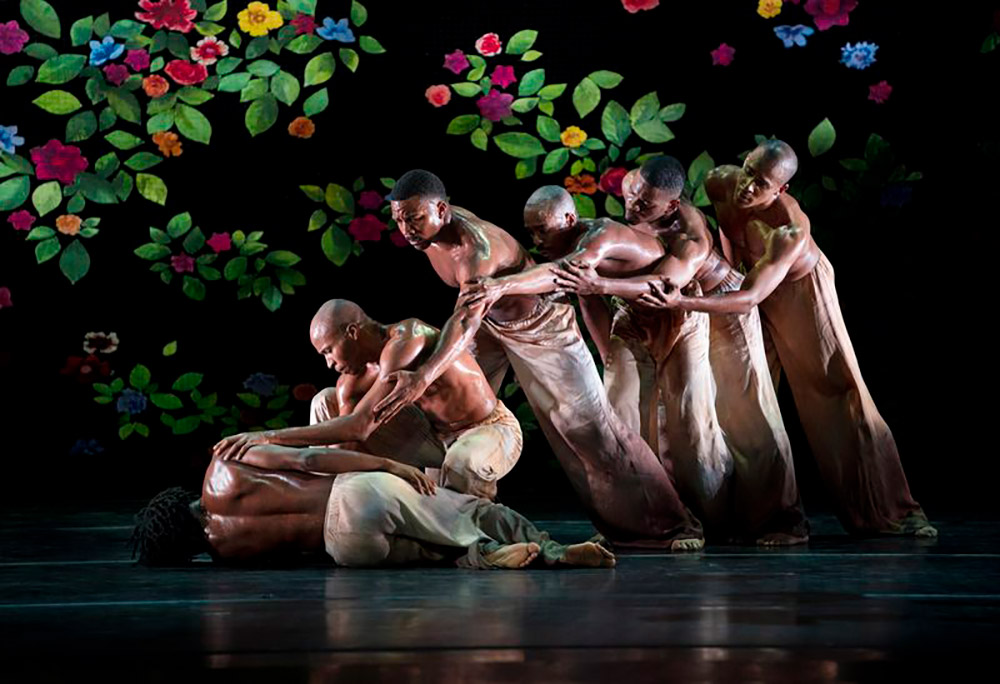
© Paul Kolnik. (Click image for larger version)
The first impression produced by Ode is of Roberts’ deep understanding and responsiveness to jazz. Both as a dancer and as a choreographer, his musicality is contained, inward, expressed mainly in the upper body: the torso, the shoulders, the arms and head and hands. You can almost see the notes ricocheting across the dancers’ bodies. There is a long section in Ode in which one dancer (Jeroboam Bozeman) responds to the high treble piano line in Don Pullen’s Suite (Sweet) Malcolm, while the other five dancers react to the lower notes. The notes and their bodies tell different stories, and this back and forth becomes a conversation between them, both musical and physical.
I felt, watching the piece, that it contained multiple deconstructed stories and voices, layered one upon the other. Roberts has said that Ode is about gun violence in America, and specifically about the violence visited on black men. There are images of death everywhere. The structure is circular – it begins and ends with a body (Chalvar Monteiro’s) on the floor. In between, we see his story spread across six men, with variations, as well as a kind of resurrection of the body and spirit. What’s interesting is that the resurrection doesn’t come at the end but at the beginning, amplified by Libby Stadstad’s flower-filled design, and Brandon Stirling Baker’s almost celestial lighting. But this resurrection of the flesh is followed by a series of semi-abstract flashbacks that emerge from Pullen’s increasingly dissonant, deconstructed score. All the dancers experience death and the physical disruption of violence, expressed in jerky, angular movements. But the imagery is elusive, fluid, impressionistic rather than didactic.
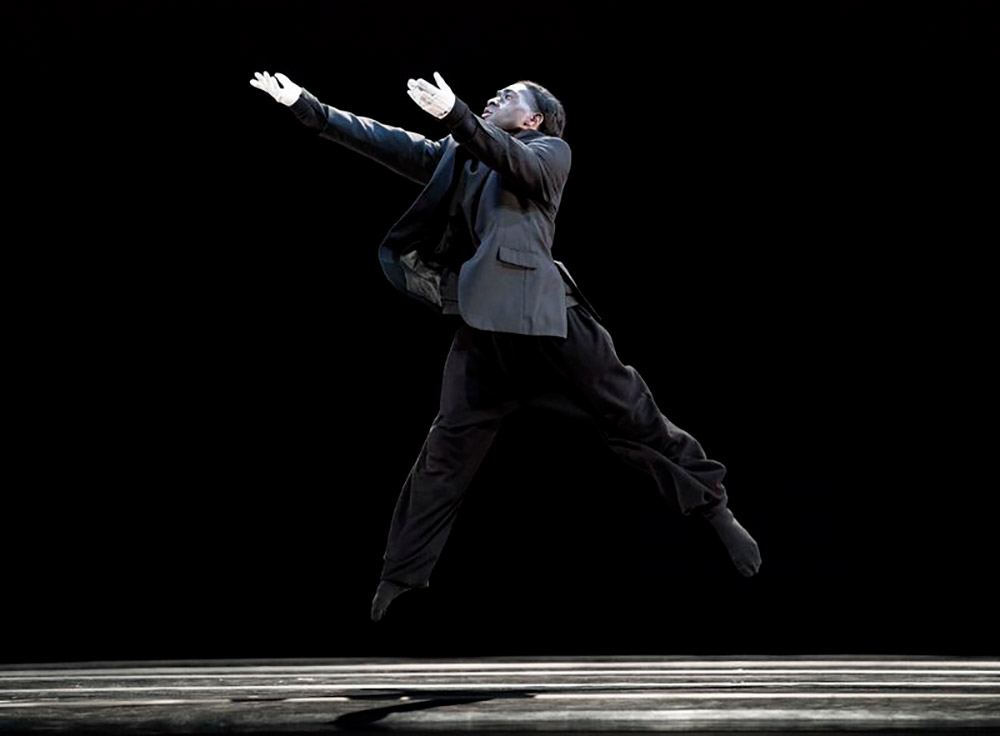
© Paul Kolnik. (Click image for larger version)
Before Ode came Barton’s Busk, first created for her own company a decade ago. Like most of Barton’s work, it has an impressively polished surface; she creates effective, surreal images, supported by a smooth, acrobatic movement style. The dancers represent eerie, monk-like street performers, clad in loose garments, their heads and faces sometimes cloaked with hoods, like a fraternity of monks. The music (recorded) alternates between mood-music that would not be out of place in a French movie about a street mime in Paris, and lively melodies for Swedish male choir. It’s an odd juxtaposition, just one of the piece’s eccentricities.
Pantomime is a recurring theme. The dancers wear white gloves and move their hands with great detail. Certain images return: the gesture of asking for money, a wave, a slap. There is a particularly striking solo for the new Ailey dancer James Gilmer, in which he stretches his long frame into extended arabesques, reaching far into space, or curves his arms like wings. Jacquelin Harris has a ghostly solo that suggests tap-dancing, in which the rhythm of her feet eventually makes its way to all parts of her body. The ensemble, too, forms a mass of bodies, sometimes moving only their heads, in and out of the light, or opening their mouths wide, like supplicants. The imagery is pictorial and cinematic, but the dance itself feels somewhat artificial, like a collection of effects.

© Paul Kolnik. (Click image for larger version)
To close the evening, the dancers performed Darrell Grand Moultrie’s Ounce of Faith, a sometimes trite crowd-pleaser that offers the joyful bang for which the Ailey company is known. The subject is uplift. At one point, we hear Moultrie speak of the importance of having people in our lives who believe in us. But mostly the piece provides cheer-inducing athleticism, legs lifted impossibly high, large ensemble numbers full of bright colors and swishing skirts, big smiles, pleasing geometries.
But Ode is something else, something altogether more rare: a work that makes us hungry for more, brimming with the promise of a choreographic voice finding its way toward the light.












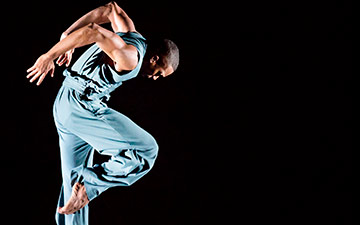

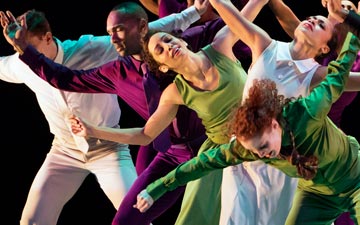
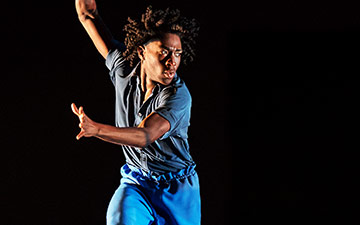

You must be logged in to post a comment.